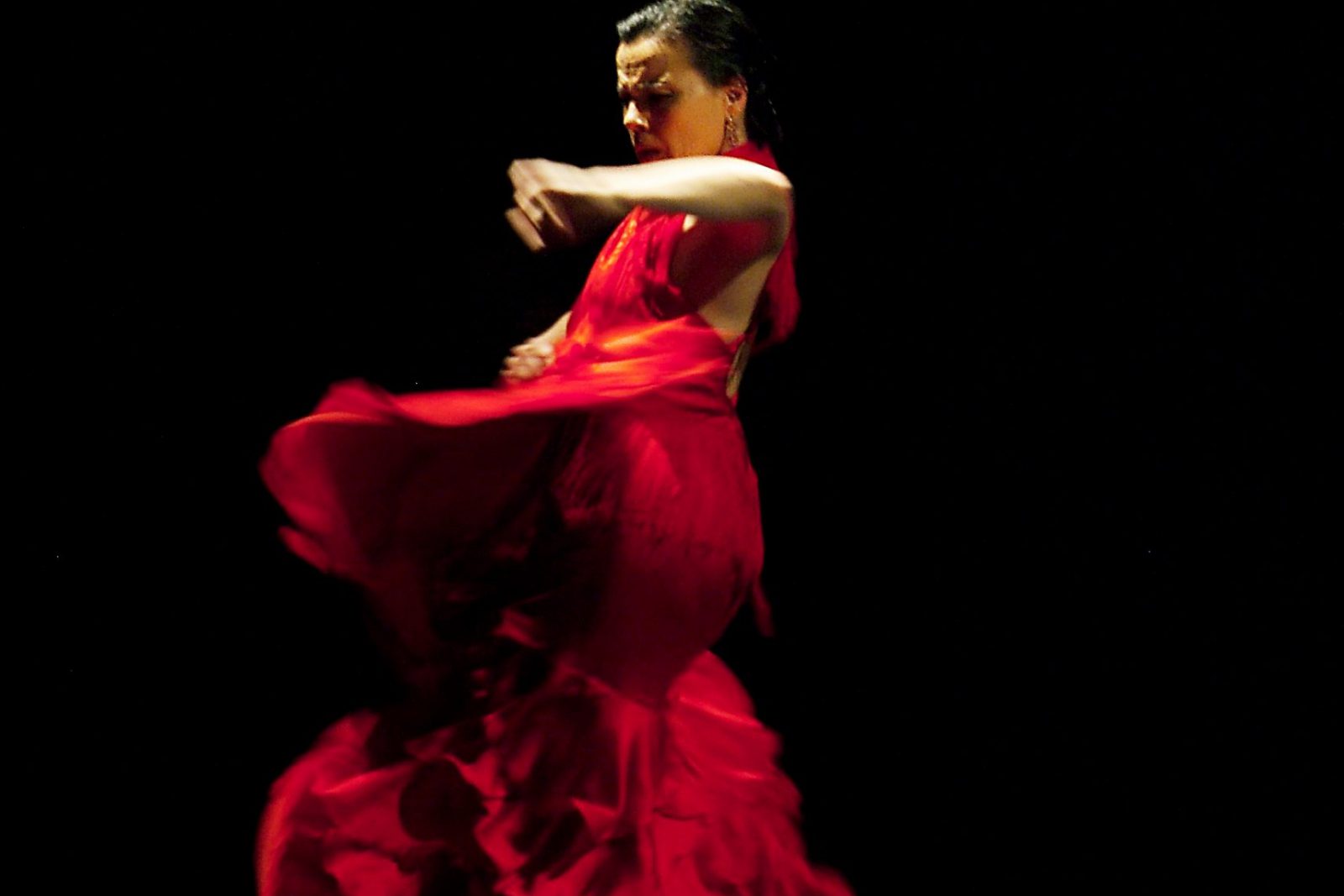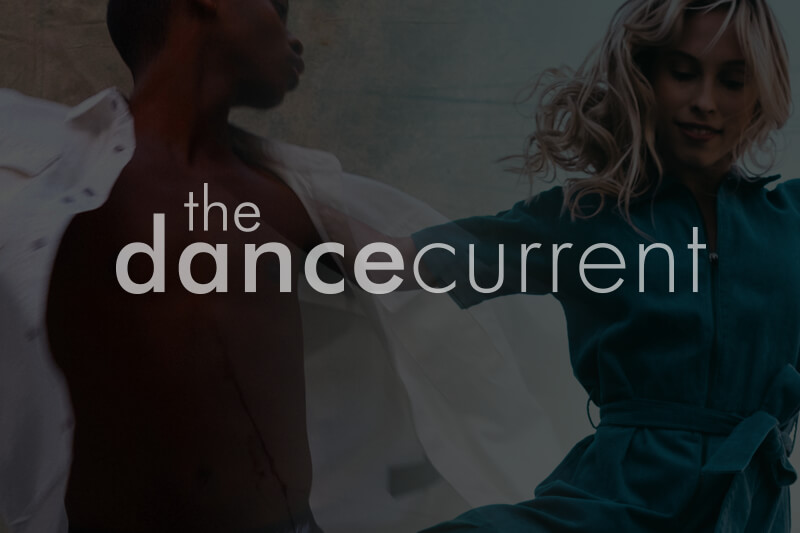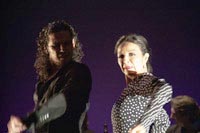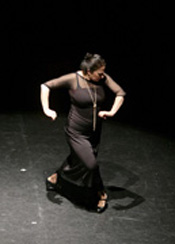Dance forms must grow and evolve away from their originating traditions if they are to survive and attract new generations of practitioners and aficionados. At the same time, tradition demands and deserves the utmost respect–it needs to always have a place at the table, if only to serve as an inspiration, counterweight or catalyst. Flamenco is both a case in point and– as demonstrated by two recent Toronto concerts–a good example of how tradition and innovation can feed each other.
Veteran Madrid-based flamenca Soledad Barrio elevates her art form simply by balancing–on tiptoe, her ribcage carried high, her épaulement weightlifter steady, elegant arms and fingers gently stirring the air. When she starts to really move, just watch out.
If Barrio is the superstar of the touring flamenco revue Noche Flamenca, which touched down at the exquisite Koerner Hall in Toronto for two sold-out nights, she is more than ably supported by a cast of equally great singers and musicians. Noche Flamenca is one of the most successful touring flamenco companies, priding itself on presenting “authentic” flamenco–code for cleaving closely to traditional flamenco technique, dances and costumes with a tableau presentation format in which the music and singing are of equal importance.
Founded in 1993 by Barrio and her husband, choreographer Martin Santangelo, Noche Flamenca’s Toronto show featured singers Manuel Gago and José Jiménez, guitarists Salva de Maria and Eugenio Iglesias, and two flamencas who went uncredited in the program but were identified for me after the fact by a senior member of the Toronto flamenco community as Sol “La Argentina” and Maria Elana. The great Juan Ogalla, originally scheduled to appear with Barrio, was MIA so company dancer Antonio Rodriguez Jiménez ably, if less excitingly, filled in for several solos and duets with Barrio.
Under the direction of Santangelo, the show is simply but cleverly staged. The lighting design is minimal but dramatic, a single spot picking out just the performer’s hands in the darkness, for example. The floor is miked. At times the sound falls away and all you can hear is the scratching of shoes on the floor and the quiet encouragements of the band, subtle counterpoints to the more typical palmas (rhythmic hand clapping), shouts and stamping. But it’s the pacing that makes the ninety-minutes-plus show go by in the blink of an eye. The energetic highs are smartly juxtaposed with more contemplative moments; the transitions are polished. Though formal, as these things go, the onstage relationships performer to performer seem genuinely and transparently supportive. So when the musicians play directly to the dancers or the singers to each other or when Barrio convinces the great gravelly voiced singer José “El Bocadillo” Jiménez to show off a few of his dance moves, the audience becomes even further engaged. By the end, we are all on our feet cheering. Noche Flamenca has all the feel-good energy and emotional accessibility of most flamenco events. But the level of artistry here is very high and Barrio would be a revelation in any dance form I suspect; she’s a truly great performer.
Myriam Allard of the Montréal-based company La Otra Orilla is also a profoundly effective performer and star of flamenco. Though technically solid and clearly well-versed in the traditions, Allard and her company make work that is conceptually and aesthetically light years distant from the flamenco puro tableaux of Noche Flamenca. Allard and partner, singer Hedi Graja, along with collaborators dancers Aurélie Brunelle and Antonio Arrebola and musicians Miguel Medina, José Sanchez and Caroline Planté, brought their newest full-length work–HomBLABLAtus–to Toronto as part of Danceworks and the Next Steps series at Harbourfront.
The work uses media and text in addition to flamenco vocabulary to explore ideas of communication, the “blabla” of the title. Occasional video projections make explicit the concepts being expressed in movement and music. In one instance Allard dances opposite a projected Arrebola while a French-language audio narrative (there are English surtitles) about talking and not listening unspools. In another, the projection serves as a PowerPoint background to a very funny spoken routine by Graja called “Small Talk, the Method.”
HomoBLABLAtus builds its thesis with a seamless blend of percussion, theatricality, movement, text and multimedia–it’s complex and sophisticated with an almost hipster-ish sensibility. All of the performers are first rate but Allard is simply riveting. Dancing in pants (for one sequence, in only one shoe), her flamenco stamps and twirls at the edge of parody. The movement is virtuosic but at the same time Allard projects an almost clown-like self-awareness that suggests humour in some moments, determination and rebellion in others. Allard and Graja’s understanding of flamenco fully embraces its attendant cultural baggage–the history, the stereotypes, the many facets of a form that is performed and appreciated by a broad range of aficionados. It’s a populist and contemporary reading (or punk, as some have suggested). But, ultimately, it’s Allard’s firm grip on tradition that allows La Otra Orilla to reimagine the form with such rigour and style.
Tagged: Flamenco, Performance, International , Toronto






